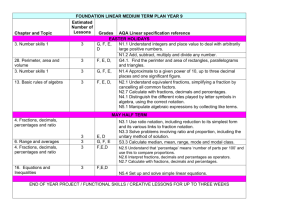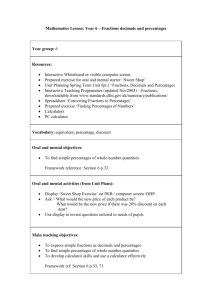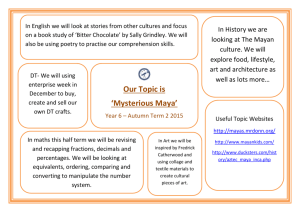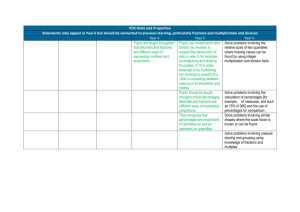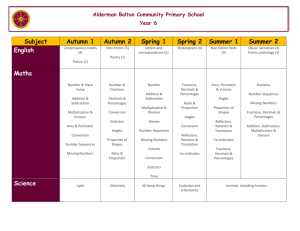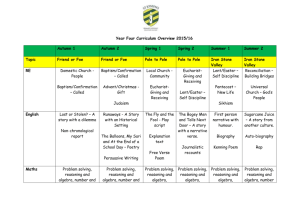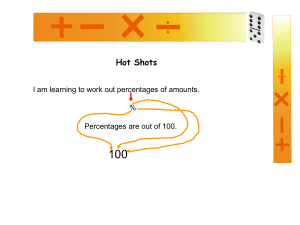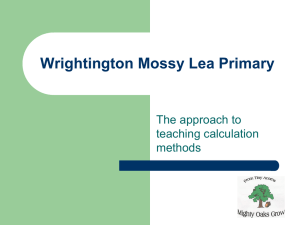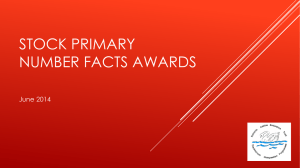How to use the Learning Journeys
advertisement
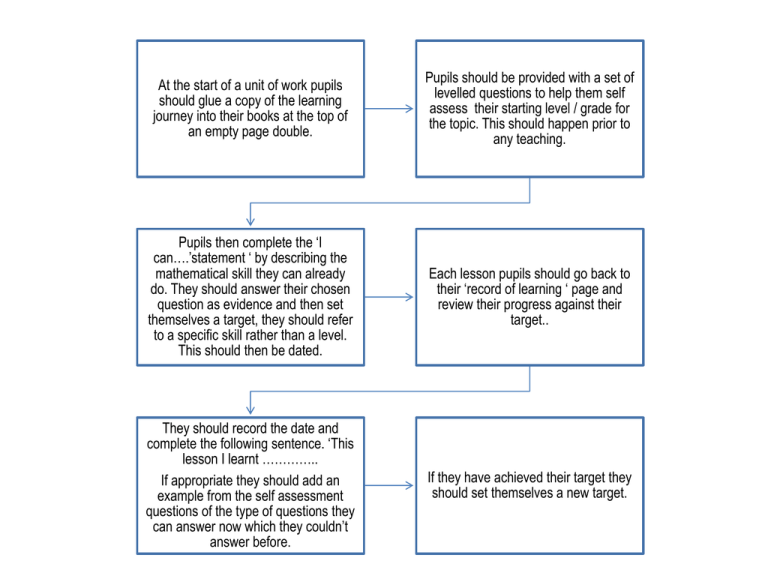
At the start of a unit of work pupils should glue a copy of the learning journey into their books at the top of an empty page double. Pupils should be provided with a set of levelled questions to help them self assess their starting level / grade for the topic. This should happen prior to any teaching. Pupils then complete the ‘I can….’statement ‘ by describing the mathematical skill they can already do. They should answer their chosen question as evidence and then set themselves a target, they should refer to a specific skill rather than a level. This should then be dated. Each lesson pupils should go back to their ‘record of learning ‘ page and review their progress against their target.. They should record the date and complete the following sentence. ‘This lesson I learnt ………….. If appropriate they should add an example from the self assessment questions of the type of questions they can answer now which they couldn’t answer before. If they have achieved their target they should set themselves a new target. Level 3 Fractions, Decimals and Percentages I can shade in fractions on a diagram that has been divided into the right number of parts. I can find 50%. 4 I can recognise equivalent fractions. I can recognise simple equivalence between fractions, decimals and percentages, e.g. ½¼¾ I can find simple percentages of an amount, e.g. 25%, 50%, 75%, 10% I can calculate unit fractions of an amount. 5 6 7 I can cancel down a fraction to its simplest form. I can confidently change fractions to decimals and percentages and order them from biggest to smallest, using calculator and non calculator methods as appropriate. I understand the equivalence between recurring decimals and fractions. I can calculate fractions of an amount. I can calculate percentages of an amount. I know when it is appropriate to use a calculator to calculate percentages of an amount. I can calculate the original price when I know the new price and the percentage increase / decrease. I can increase and decrease an amount by a percentage. I am starting the lesson on level _______ I can ……………….. Here is an example of the kind of question I can answer. My Target To be move my learning forward I must learn how to …………………………… Level 3 Circle the diagram below which represents ⅜ Level 4 Circle the diagram below which represents ⅕ Which is bigger ¼ of 28 or ⅕ of 30? Explain how you know. Level 5 27 90 Cancel this fraction into its simplest form. Which is bigger ⅜ of 48 or ⅘ of 25? Explain how you know. Level 6 7 5 20 8 Write these fractions as percentages Level 7 Explain how you can tell whether a fraction is a terminating decimal or a recurring decimal. Level 3 An electric guitar costs £462. The shop is going to have a 50% off sale. What is 50% of £462? Level 4 The shop decide that 50% is too much to take off the price. Work out the following percentages of £462 25% = 75% = 10% = Level 6 An electric guitar costs £462. The shop is going to have a sale. Work out the new cost of the guitar if it is reduced by: 23% = 15% = 81% = Level 5 An electric guitar costs £462. The shop is going to have a sale. They haven’t made a decision about what to reduce the price by yet. Help them to make a decision by calculating the following percentages : 23% = 15% = 81% = Level 7 This electric guitar has been reduced by 27%. It now costs £760. What did it cost originally? Learning journey map for the unit FDP Articulation of learning across the unit Progression arrow for the skill of ‘converting between fractions, decimals and percentages’ An example of a learning journey for the unit of Shape space and measure. Complete record of learning over a unit of work
